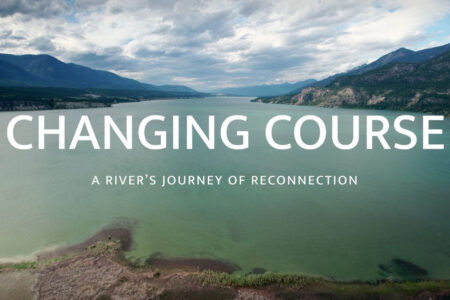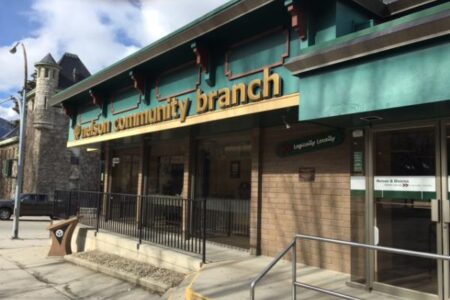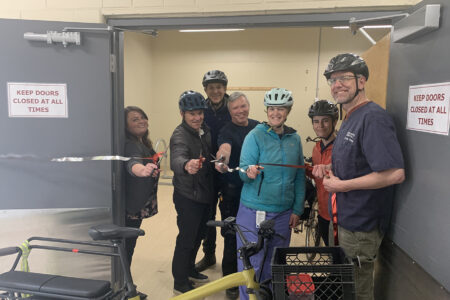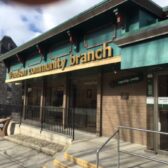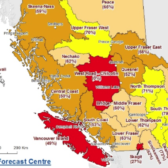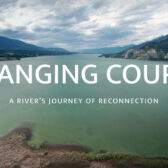Earthquake and tsunami exercise in Port Alberni recalls shaky past
Five decades after the Port Alberni tsunami devastated local residences and businesses, the Province of British Columbia is hosting an exercise to test the BC Earthquake Immediate Response Plan and promote interagency co-operation among both internal and external agencies that support emergency response.
On March 27, 1964, a massive earthquake struck Prince William Sound in Alaska.
The earthquake registered 9.2 on the Richter scale and lasted four-and-a-half minutes, which made it the most powerful recorded earthquake in U.S. history, and the second most powerful earthquake ever recorded in the world. The tsunami waves resulting from this earthquake claimed over one-hundred lives in the United States.
Just after midnight on March 28, 1964, tsunami waves from the earthquake funnelled up 40 kilometres of the Alberni Inlet, amplifying their height and impact, and a series of waves lifted homes off their foundations and upended cars.
In all, approximately 300 homes and businesses were damaged in and around Port Alberni.
“The 1964 tsunami was a wake-up call to the dangers posed by earthquakes along the Pacific coast and beyond,” Port Alberni mayor, Mike Rutta.
“While our community has made tremendous progress since then to mitigate the impacts of future events, as individuals we all must take steps to prepare our homes and families to cope during an emergency.”
Much has changed in British Columbia’s earthquake response in the five decades since the 1964 Alaskan Earthquake, including better building codes, increasingly accurate early response technology, the formation of response groups like Emergency Management BC (EMBC) and the appointment of Naomi Yamamoto as B.C.’s first Minister of State for Emergency Preparedness.
Today, in the event a tsunami watch, advisory or warning is issued by the National Tsunami Warning Centre (NTWC), the Provincial Emergency Notification System (PENS) is activated by EMBC and relays this critical information to local governments, emergency officials, media, first responders like police and fire departments, as well as partner agencies like the coast guard and military.
PENS can initially transmit approximately 800 automated voice notices and 450 emails. The notifications are then further redistributed through government social media channels, federal advisories, partner agencies, marine radio, and a number of other agency systems.
In 2011, Emergency Management BC also developed the BC Emergency Management System (BCEMS), a comprehensive framework that provides a structure for a standardized approach to developing, coordinating and implementing emergency management programs across the province. BCEMS is a four-phase emergency management system – Mitigation, Preparedness, Response, and Recovery – rather than focusing exclusively on emergency response.
From June 7-10, 2016, Exercise Coastal Response, the province’s first full-scale earthquake and tsunami response exercise brings together stakeholders from all levels of government, as well as Emergency Management BC staff, First Nations, Crown corporations, critical infrastructure owners and non-government organizations involved in provincial-level response to model how they would collaboratively work to respond to the impacts of a catastrophic event along coastal British Columbia.
It tests the procedures set out in the BC Earthquake Immediate Response Plan and promotes interagency co-operation among internal and external agencies that support emergency response.
During the same timeframe, neighbouring states and the U.S. Federal Emergency Management Agency (FEMA) Region 10 are conducting an exercise called Cascadia Rising 2016. As well, Canadian federal departments involved in earthquake response will be conducting Exercise Pacific Quake and Exercise Staunch Maple.
Quick Facts:
Province’s Seismic Accomplishments
-
Ministry of Transportation and Infrastructure:
- Over $4 billion in bridge and large highway seismic retrofits
-
Emergency Management BC:
- Hosting the $1.2 million provincial-level earthquake and tsunami exercise with partners
- $95,000 invested in improvements to the Provincial Emergency Notification System (PENS)
- $200,000 per year in funding to Vancouver’s Heavy Urban Search and Rescue (HUSAR) and $50,000 to Ocean Networks to gather data sets related to tsunami mapping and earthquake monitoring
- $5 million to Ocean Networks Canada to increase the development and use of earthquake early warning systems
-
Ministry of Health:
- $3.9 billion of new construction and upgrades in high risk seismic zones
- $2.9 billion for capital projects throughout the Province over the next three years – with all new construction built to current seismic standards
-
Ministry of Education:
- $1.12 billion to replace or upgrade 153 schools
- $560 million over the next three years for upgrades on high risk seismic schools
Exercise Coastal Response
- Exercise Coastal Response is based on a magnitude 9.0 earthquake occurring off the shore of Southwestern B.C. as a result of a rupture of the Cascadia Subduction Zone. The earthquake scenario will generate a tsunami impacting the west coast of Vancouver Island minutes after the initial shock.
- The exercise brings together key stakeholder groups such as different levels of government, provincial ministries, First Nations, Crown corporations, non-government organizations and first responders.
- The exercise is a mix of real-time activities and simulated situations involving functions such as emergency operations, logistics, medical care, mass care, public information and operational communications.
Exercise Pacific Quake
- Exercise Pacific Quake is a Canadian federal government earthquake exercise. Federal exercise play will include the local federal coordination departments who have a presence in the lower mainland and Vancouver Island, such as Canadian Coast Guard, Transport Canada, Public Health Agency of Canada, and will extend to the Government Operations Centre in Ottawa.
Exercise Staunch Maple
- The Joint Task Force Pacific (JTFP), the lead Canadian military formation in B.C., have a range of activities planned, some of which are linked to Exercise Coastal Response activities located along the west coast of Vancouver Island.
Exercise Cascadia Rising
- Led by Northwest United States FEMA Region 10, this exercise includes municipalities and counties in the Western half of Washington and Oregon, as well as parts of Idaho.




